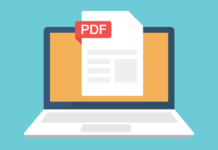
Nobody anticipates a workplace disaster, but developing an emergency evacuation plan is a critical step in protecting your people, your workplace, and your organization. Your contingency plan should include at least the following:
A system for reporting fire and other disasters.
An Evacuation Policy and Procedure.
Floor plans, work and refuge plans as well as escape protocols and specified routes.
Names, titles, departments, and phone numbers of people inside and outside your organization whom you can contact for more information or clarification about your contingency plan tasks and responsibilities.
Procedures for personnel who must remain to perform or shut down vital plant work, fire extinguishers, or other vital services that cannot be turned off at each emergency alarm prior to escape.
All medical responsibilities should be investigated and assigned to the appropriate personnel. Start with these basic actions-
First, ask yourself a few basic questions that will help you create this unique emergency plan like-
When is the order placed?
Who will take care of the evacuation?
How long does the evacuation take?
How are escape routes kept in good condition?
As you answer these questions, consider the types of crises that can arise, such as floods, cyclones, tornadoes, fires, toxic gas emissions, chemical spills, radioactive accidents, explosions, civil unrest, and workplace violence. Specific crises can occur more frequently.
You can rationalize what to do in the event of a disaster by brainstorming each emergency situation. Consider the following scenarios for what should happen in your facility in the event of a disaster:
Are all systems and equipment in place?
When was the last time you tested your fire alarm or sprinkler system?
Are the competent authorities informed of the situation?
Are fire doors installed?
Every company must have a well-communicated emergency evacuation strategy in place. Hire fire watch guards for Workplace Emergencies and Evacuation booklet and talk to firefighters about how to customize an emergency evacuation plan with all of the emergency items and services you need.
Assign roles and responsibilities to everyone.
When disaster strikes, a pandemonium can develop quickly, especially if no one knows what to do or who is in control. Misunderstandings can be reduced by establishing a clear chain of command that gives individual workers authority and responsibility for arranging and directing evacuations. The staff must also be assigned to other important tasks.
Make fire protection planning a top priority.
While we often consider the impact of extreme weather conditions on safety and business continuity, fire is an often overlooked hazard. Don’t forget about fire safety tactics, including adhering to fire safety rules and regulations, as well as regular building safety inspections. A thorough understanding of the contingency plan is one of the most overlooked aspects of a company’s evacuation methods.
Acknowledge all those affected by the disaster.
When a tragedy occurs, many people are affected, from employees and families to consumers and emergency responders. A comprehensive evacuation plan identifies and develops procedures for everyone, including those who need help due to disability or other circumstances.





